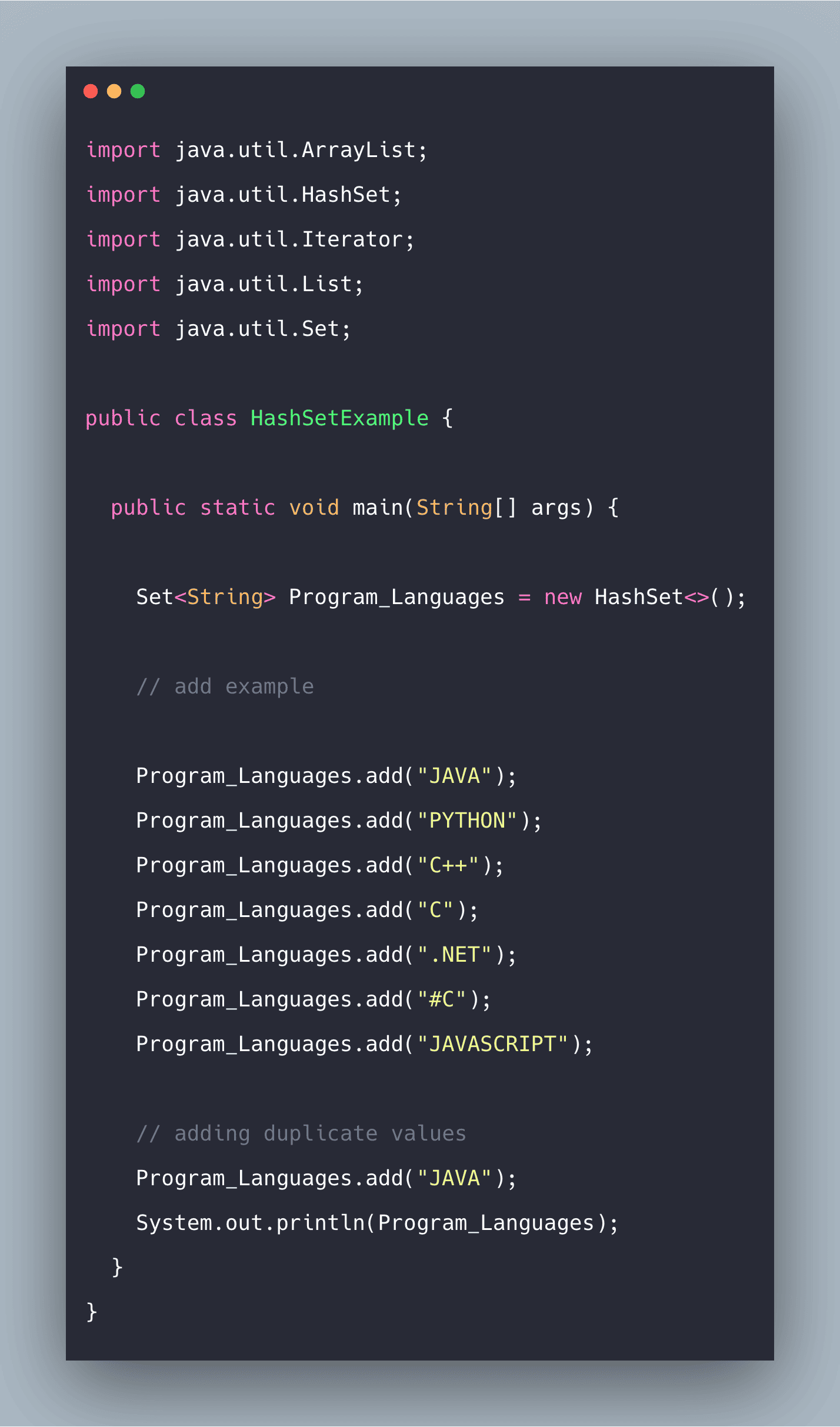Java HashSet is an inbuilt class that is used to create a collection that uses the hash table for storage. It inherits the AbstractSet class and implements the Set interface. Whenever it comes to storing data the primary concern is which data structure would be the most efficient to store and compute data and in this, we will discuss one of the most fundamental data structures in the Java Collections API efficient HashSet it is in terms of usability given its constant-time performance and ability to avoid duplicates.
HashSet in Java Example
Java HashSet class implements the Set interface, backed by a hash table which is actually a HashMap instance. No guarantee is made as to the iteration order of the set which means that the class does not guarantee the constant order of elements over time. This class permits the null element.
The important points about the Java HashSet class are:
- HashSet doesn’t maintain insertion order. Elements are inserted based on the hashcode.
- HashSet is the best approach to search for the operations.
- The initial default capacity of the HashSet is 16, and the load factor is 0.75.
- HashSet stores the items by using the mechanism called hashing.
- HashSet allows the null value.
- The HashSet class is non synchronized.
- HashSet contains unique elements only.
#hashset #java #abstractset
